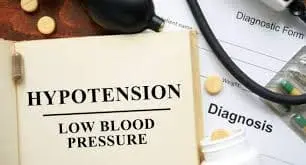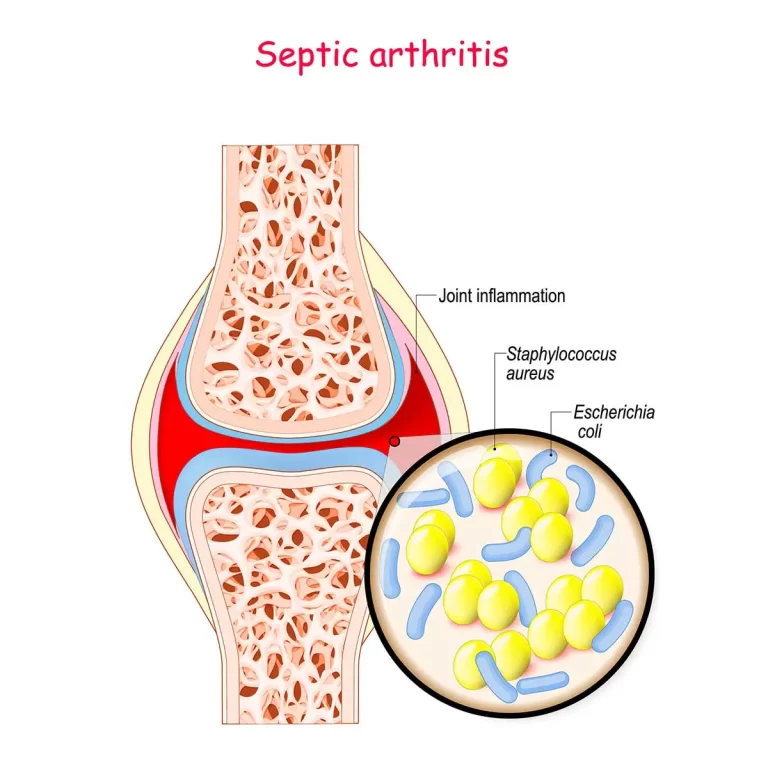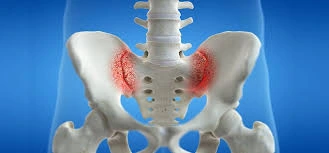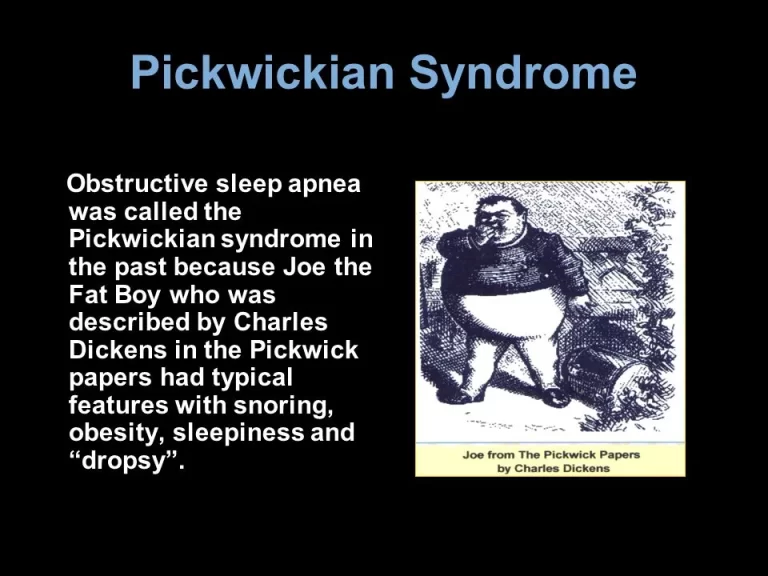Vocal Cord Paralysis
Introduction
Vocal cord paralysis, also known as vocal fold paralysis, is a condition in which one or both vocal cords (vocal folds) are unable to move properly. Damage to the nerves that regulate the vocal cords may be the cause of this. The vocal cords are two bands of muscle that vibrate to produce sound when we speak or sing. When the vocal cords cannot move properly, it can cause hoarseness, breathiness, and difficulty speaking.
A medical disease known as vocal cord paralysis develops when neurological signals cannot reach your voice box, which is in charge of producing your voice.
In this way, the muscles become paralyzed, making it impossible for you to swallow food or swallow saliva through your windpipe. Commonly, nerve damage from various cancers, viral infections, and surgery results in vocal cord paralysis. Two common therapies for vocal cord palsy include speech therapy and surgery.
About Your Vocal Cords
Two elastic bands of tissue in your throat are called your vocal cords. They are situated at the top of your trachea, in the larynx, or voice box (windpipe). Your doctor can use a small mirror positioned at the back of your throat to see your vocal cords and larynx.
Your voice the chords are necessary for swallowing, breathing, coughing, and producing noises.
Your voice chords open to allow air to pass when you breathe.
Your vocal cords converge and vibrate when you laugh, cough, or talk. This is how music is produced.
Your vocal cords tighten tightly as you swallow. This prevents liquids and food from entering your lungs through your trachea.
Your vocal cords are situated near the trachea, or windpipe entrance, and they resemble two muscular tissues. One of these muscles becomes immobile due to vocal cord paralysis, and in some cases, both of them.
This results in breathing, swallowing, and speaking difficulties as well as vocal cord paralysis. When you are diagnosed with this illness, it’s normal to feel harsh breathing, loss of vocal tone, and lack of gag reflex.
When one or both of your voice cords are immobile, it is known as vocal cord paralysis. Usually, it results from injury to the nerve that regulates the muscles of your larynx. This nerve could get damaged by:
- Surgery
- A tumor growing in your lung, esophagus, or neck
- Brain damage caused by a tumor or stroke
- Occasionally, the reason for the vocal cord paralysis is unknown.
You cannot regulate the movement of the muscles that control your voice if you have vocal cord paralysis. It occurs when your voice box’s (larynx) nerve impulses are disrupted. The vocal cord muscles become paralyzed as a result.
Breathing and speaking might be difficult for someone with vocal cord paralysis. This is true because the functions of your vocal cords, also known as vocal folds, go beyond only making sound. Additionally, they protect your airway by keeping food, liquids, and even saliva out of your trachea, which keeps you from coughing.
Vocal Cord Paralysis Types
Vocal cord paralysis mostly occurs in two forms:
Vocal Cord Paresis: This disorder is named after the abnormal movement of the laryngeal muscles caused by a partial stoppage of nerve impulses.
Vocal Cord Paralysis: This disorder is characterized by a total shortage of nerve impulses to the voice box, resulting in total paralysis of the laryngeal muscles.
Viral infections, some malignancies, and nerve injury caused following surgery are all potential causes of vocal cord paralysis. Surgery and voice therapy are the typical forms of treatment for vocal cord paralysis.
Vocal Cord Paralysis Symptoms
Any or all of the following symptoms could be caused by vocal cord paralysis:
This is sometimes referred to as when foods “go down the wrong pipe.” This may sometimes result in pneumonia or breathlessness.
feeble cough, such as the inability to clear mucus even after attempting.
breathing difficulties during exercising.
The two flexible bands of muscle tissue that are located at the windpipe’s opening are called your vocal cords (trachea). The bands come together and vibrate to produce sound as you talk. The vocal cords are kept loose and open during the remainder of this period to allow for breathing.
Usually, vocal cord paralysis affects just one paralyzed vocal cord. It’s an uncommon yet dangerous condition to have paralysis of both vocal cords. This may result in serious respiratory and swallowing issues, as well as speech impairments.
The following are some indications and symptoms of vocal cord paralysis:
- A breathy quality to the voice
- Difficulties with swallowing, such as coughing, choking, or both.
- Hoarseness
- Noisy breathing
- Shortness of breath
- Loss of vocal pitch
- choking or coughing up food particles, liquids, or saliva
- The importance of speaking while frequently breathing
- Inability to speak loudly
- Loss of your gag reflex
- Ineffective coughing
- Frequent throat clearing
Causes OF Vocal Cord Paralysis
Vocal cord paralysis disrupts the nerve impulses that supply the larynx, or voice box, which causes muscle paralysis. Medical experts frequently struggle to pinpoint the precise etiology of vocal cord paralysis. There are a few known and, Vocal Cord Paralysis can be caused by a variety of factors, including:
surgically induced injury to the vocal cords. Surgical procedures conducted on or near the neck or upper chest have a chance to harm the nerves supplying the voice box. One of the procedures that carries a risk of complications is surgery on the thyroid or parathyroid glands, esophagus, neck, or chest.
A chest or neck injury. Trauma to the neck or chest can harm the nerves that supply the vocal cords or possibly the voice box itself.
Stroke. The brain region that communicates with the voice box is damaged by a stroke, which also prevents blood flow to the area.
Cancers. Malignant and non-malignant tumors that are developing in or close to the muscles, cartilage, or nerves that regulate the function of the voice box can cause vocal cord paralysis.
Infections. The nerves in the voice box can become inflamed and suffer direct damage from some illnesses, including the Epstein-Barr virus, herpes, and Lyme disease. There is some evidence to suggest that vocal cord paralysis caused by a COVID-19 infection is possible.
neurological disorders. Vocal cord paralysis can result from some neurological diseases including multiple sclerosis or Parkinson’s disease.
Brain tumor: A brain tumor can put pressure on the nerves that control the vocal cords.
Neck or chest trauma: Neck or chest trauma can injure the nerves that control the vocal cords or the voice box itself.
Cancer of the thyroid, lung, or esophagus: Cancer of the thyroid, lung, or esophagus can grow into or around the nerves that control the vocal cords.
Multiple sclerosis: Multiple sclerosis is a chronic disease that can damage the myelin sheath, which protects the nerves. This can lead to damage to the nerves that control the vocal cords.
Myasthenia gravis: Myasthenia gravis is an autoimmune disease that causes weakness in the muscles, including the vocal cord muscles.
Amyotrophic lateral sclerosis (ALS): ALS is a neurodegenerative disease that causes progressive weakness and paralysis of the muscles, including the vocal cord muscles.
Infections, such as Lyme disease or diphtheria: Some infections can cause inflammation of the nerves that control the vocal cords.
Certain medications: Certain medications, such as some chemotherapy drugs, can damage the nerves that control the vocal cords.
The reason for vocal cord paralysis is frequently not known.
Risk factors
Undergoing a chest or throat operation. Vocal cord nerve injury is more likely to occur in people who need surgery on their thyroid, throat, or upper chest. The vocal cord nerves can occasionally be harmed by the breathing tubes used during surgery or to assist you in breathing if you’re suffering from major respiratory problems.
affected by a neurological disorder. Specific neurological conditions like Parkinson’s disease or multiple sclerosis increase the risk of vocal cord paralysis or weakening.
The following are some things that could make you more at risk for vocal cord paralysis:
Vocal cord paralysis diagnosis
Endoscopy: A tiny camera-equipped tube is put into your throat during this procedure to look at your voice folds and laryngeal muscles. Through this medical process, the vocal cords will be examined for any damage. Endoscopy can be used to diagnose vocal cord paralysis. Your doctor will use an endoscope, a flexible tube with a camera at one end, during your endoscopy. The endoscope will be inserted into one of your nostrils and moved carefully to your larynx. They will ask you to speak once they can view your vocal cords. As you speak, they will observe your voice cords.
Your doctor may initially inquire about the duration of your speech issues before testing your voice and pitch to see how well you talk. He may request the following tests to diagnose vocal cord paralysis if he believes the vocal folds are damaged:
Laryngeal Electromyography (LEMG) is a diagnostic procedure for vocal cord paralysis that involves inserting needles into the skin through the neck. The strength and direction of the neuromuscular impulses traveling from your brain to your vocal cords are captured using these. The doctor will ask you to complete a number of speaking exercises that target particular muscles and assess their functionality
Imaging procedures Additionally, your physician could advise that you undergo imaging testing. This can assist in determining the source of the paralysis, such as computed tomography CT scans, X-rays, and magnetic resonance imaging MRIs are used to identify additional potential causes of vocal cord paralysis in patients. Some of these imaging examinations may be included in blood tests for additional medical research. positron emission tomography (PET) scans are a few examples of these imaging examinations
Treatment OF Vocal Cord Paralysis
The treatment for VCP depends on the underlying cause and the severity of symptoms. If the vocal cord is expected to recover on its own, treatment may be focused on managing symptoms and preventing complications. This may include:
Voice training
Voice therapy: A speech therapist can teach you exercises to strengthen the vocal cords and improve voice production.
Exercises are used in voice treatment to improve your vocal cords. It teaches you how to make up for your paralyzed vocal cords using your moving vocal cords.
Exercises or other activities are performed during voice therapy sessions to strengthen your vocal cords, improve breath control while speaking, reduce tension in the muscles around the paralyzed vocal cord or cords, and safeguard your airway when swallowing. Occasionally, if your vocal cords are paralyzed at a spot that doesn’t require more mass or repositioning, voice therapy may be the only treatment you need.
Breathing exercise
Breathing exercises: These exercises can help to improve breath control and reduce vocal fatigue.
Breathing exercises can be helpful for people with vocal cord paralysis by helping to improve breath control and reduce vocal fatigue. These exercises can also help to strengthen the vocal cords and improve resonance.
Here are a few examples of breathing exercises for vocal cord paralysis:
- Diaphragmatic breathing: This type of breathing uses the diaphragm, a muscle located below the lungs, to help you breathe. To do diaphragmatic breathing, place one hand on your chest and the other on your stomach. Breathe in through your nose slowly and deeply, allowing your abdomen to swell. Breathe out slowly through your mouth, allowing your stomach to contract.
- Pursed-lip breathing: This type of breathing helps to slow down the exhale and reduce vocal fatigue. To do pursed-lip breathing, close your lips as if you are going to whistle. Breathe out slowly through your pursed lips, making a “whooshing” sound.
- Humming: Humming is a great way to warm up the vocal cords and improve resonance. To hum, simply close your mouth and hum a comfortable pitch for 10-15 seconds. You can feel your vocal cords vibrating as you hum.
- Lip trills: Lip trills are another good way to warm up the vocal cords and improve breath control. To do a lip trill, simply close your lips and blow out gently, making a buzzing sound. You can feel your lips vibrating as you do this.
You can do these breathing exercises regularly to improve your vocal cord health. It’s important to pay attention to your body and avoid doing any workouts that make you feel pain or discomfort, though.
Here is a sample breathing exercise routine that you can try:
- Start by sitting comfortably and straightening your back.
- Put your right hand on your tummy and left on your chest.
- Breathe in through your nose slowly and deeply, allowing your abdomen to swell.
- Breathe out slowly through your pursed lips, making a “whooshing” sound.
- Repeat steps 3-4 for 10-15 breaths.
- Hum for 10-15 seconds.
- Do 10 lip trills.
- Repeat steps 6-7 two more times.
You can do this routine once or twice a day, or more often if you need to
Cough training
Cough training is a type of therapy that can help people with vocal cord paralysis improve their ability to cough effectively. This is important because people with vocal cord paralysis are at risk of developing pulmonary complications, such as pneumonia.
Cough training exercises can help to strengthen the muscles that are used for coughing, such as the diaphragm and abdominal muscles. They can also help to improve coordination between the muscles used for breathing and coughing.
Here is a simple cough training exercise that you can try:
- Maintain a straight back when sitting in a comfortable position.
- Place your hands on your stomach.
- Allow the abdomen to swell as you inhale slowly and deeply through your nose.
- Close your mouth and purse your lips.
- Contract your diaphragm and abdominal muscles to force the air out of your lungs. This should create a strong, controlled cough.
- Repeat steps 3-5 several times.
If you have difficulty coughing, you can try holding a vibrating device against your chest or back. This could make mucus release and coughing easier.
You should do cough training exercises regularly, at least once or twice a day. But it’s important to pay attention to your body and stop doing any workouts that make you feel pained or uncomfortable.
Here are some additional tips for cough training:
- To aid in reducing mucus, drink lots of water.
- Avoid smoking and secondhand smoke, as these can irritate your airways and make it more difficult to cough.
- Humidify the air in your home to help keep your airways moist.
- If you have difficulty coughing, try holding a vibrating device against your chest or back.
- If you are unable to cough up mucus, you may need to use suction to remove it.
Cough training: This can help to improve the ability to cough effectively and clear mucus from the airways.
The etiology, the severity of the symptoms, and the length of time from the onset of symptoms all affect how vocal cord paralysis is treated. Surgery, bulk injections, vocal therapy, or a combination of treatments are all possible forms of treatment.
You might occasionally recover without undergoing surgery. Because of this, your doctor may postpone permanent surgery for at least a year after your vocal cord paralysis starts.
However, within the first three months of voice loss, surgical therapy with various bulk injections is frequently performed.
Your doctor could advise voice treatment while you’re waiting for surgery to stop you from using your voice incorrectly as the nerves recover.
The paralyzed vocal cord can occasionally heal on its own. In other instances, the vocal chord that is healthy and moving replaces the paralyzed vocal cord. Typically, this occurs throughout the first year. The vocal chord can occasionally become permanently paralyzed.
If you struggle to swallow or your voice is hoarse, you could require treatment.
Surgery
If the vocal cord is not expected to recover on its own, or if symptoms are severe, surgery may be recommended. Surgical options include:
- Medialization laryngoplasty: This procedure involves moving the paralyzed vocal cord closer to the midline of the voice box.
- Arytenoid adduction: This procedure involves suturing the arytenoid cartilages (which support the vocal cords) together to bring the vocal cords closer together.
- Vocal cord implants: This procedure involves placing a small implant into the paralyzed vocal cord to add bulk and improve its function.
If your vocal cord paralysis symptoms don’t completely go away on their own, you can be offered surgical treatments to help you talk and swallow more clearly.
Surgical options include:
Injection in bulk.
The vocal cord muscle will likely be small and weak if the nerve to your vocal cord is paralyzed. A laryngologist, a doctor who specializes in laryngeal diseases, could inject your paralyzed vocal cord with body fat, collagen, or another permitted filler material to give it bulk. So that the opposing, moving vocal cord may make closer contact with the paralyzed cord when you talk, swallow, or cough, the extra bulk moves the affected vocal cord toward the center of your voice box.
Injection
A shot (injection) could be given to your paralyzed vocal cord. Your vocal cord becomes bulkier as a result of the injection’s substance, which brings your paralyzed chord closer to your moving cord. Until your vocal cord heals, the injection can be helpful for a few months.
In your doctor’s office, the injection can be administered using a local anesthetic (a drug that makes a part of your body numb). Your voice will be heard when your doctor uses an endoscope to examine your vocal cords and listen to your voice.
Your doctor will then administer the shot. You can experience some moderate discomfort during the injection. During the injection, avoid speaking, swallowing, and coughing. Breathe softly and make an effort to relax.
While the treatment is being done, you might hear a difference in your voice. The components in the injection may make your voice seem strained as well, but once they have penetrated your vocal cords, it will improve. Days to weeks may pass throughout this. Your voice will change in quality till then.
You will need to be seen in the clinic for roughly 30 minutes following the injection to ensure that there are no complications.
Following your injection
Wait two hours before eating or drinking anything. This period of time is necessary for the anesthesia to wear off.
Do not scream or whisper. These could aggravate the voice cords.
Another alternative is to have surgery to reposition your paralyzed vocal cord. The name of this procedure is laryngoplasty. For those who don’t see any improvement after previous therapies, it might be useful.
laryngoplasty: Your paralyzed vocal chord will be caused closer to your moving vocal cord during a laryngoplasty. You’ll receive general anesthesia, which is a sedative. Your paralyzed vocal cord will be on the side of your neck where the surgeon will create an incision (surgical cut). To make your paralyzed vocal chord touch your moving vocal cord, they will insert a piece of silicone material. Your vocal cords work together to produce sound while protecting the airway when you swallow.
Following your procedure, you will spend the night in the hospital. A minor chance of infection and edema exists. Problems with breathing (respiratory) can result from this. Antibiotics may be prescribed to you to help reduce the chance of infection. If you experience swelling, steroids (medications that could assist to lessen the swelling) will be prescribed to you. If more information is required, your doctor and nurse will provide it.
Implanted structurally. This treatment, also known as thyroplasty, medialization laryngoplasty, or laryngeal framework surgery, uses an implant in the larynx to reposition the voice cord rather than utilizing a bulk injection. Rarely, patients who have this procedure may require a second procedure to relocate the implant.
Vocal cord realignment. In this treatment, a surgeon pushes the paralyzed vocal cord toward the center of your voice box by moving a window of your own tissue from the outside of your voice box inward. This increases the vibration of your healthy vocal chord against its paralyzed opposite.
reinnervation, the replacement of a damaged nerve. In this procedure, the injured vocal cord is replaced by a healthy nerve that is moved from another part of the neck.
The time it takes for your voice to improve can range from 6 to 9 months. Some medical professionals combine this operation with a large injection.
Tracheotomy. Your airflow will be reduced if both of your vocal cords are paralyzed and near together. This makes breathing extremely difficult and requires a procedure called a tracheotomy.
An opening in the windpipe (trachea) is made by making an incision in the front of your neck during a tracheotomy. A breathing tube is placed, allowing air to bypass the vocal cords.
Emerging treatments
The opening and closing of the vocal cords that are immobile may be restored by connecting them to another source of electrical stimulation, such as a nerve from another area of the body or an instrument like a cardiac pacemaker.
Even with permanent paralysis, most people are able to improve their voice and swallowing function with treatment. Voice therapy and surgery can help to improve the ability to speak, swallow, and breathe comfortably.
Here are some additional tips for vocal cord paralysis recovery:
- Rest your voice by speaking softly and softly.
- Drink plenty of fluids: This will help to keep your vocal cords hydrated.
- Avoid smoking and secondhand smoke: Smoking can irritate the vocal cords and delay healing.
- Humidify the air: This can help to reduce dryness and irritation of the vocal cords.
Indication of surgery
The indications for vocal cord paralysis surgery depend on the severity of symptoms and the impact on the patient’s quality of life.
Surgery may be recommended for patients with vocal cord paralysis who have:
- Severe hoarseness or breathiness that does not improve with voice therapy or other non-surgical treatments.
- swallowing difficulties that cause choking or aspiration.
- speaking loudly or for extended periods of time is difficult.
- Shortness of breath due to vocal cord paralysis.
Surgery may also be recommended for patients with vocal cord paralysis who are at risk of complications, such as aspiration pneumonia or airway obstruction.
Here are some specific examples of situations where vocal cord paralysis surgery may be indicated:
- A patient with vocal cord paralysis after thyroid surgery is unable to speak loudly enough to work or communicate effectively.
- A patient with vocal cord paralysis after a stroke who has difficulty swallowing and is at risk of aspiration pneumonia.
- A patient with vocal cord paralysis due to multiple sclerosis has progressive weakness of the vocal cords and is at risk of airway obstruction.
It is important to note that vocal cord paralysis surgery is not a cure for all cases of vocal cord paralysis. In some cases, the voice may not fully recover after surgery. However, most patients experience significant improvement in their voice and swallowing function.
If you have vocal cord paralysis and are considering surgery, be sure to discuss the risks and benefits with your doctor.
Contraindication for surgery
Vocal cord paralysis surgery is generally safe and effective, but there are a few contraindications or reasons why someone may not be a good candidate for the surgery. These include:
- Uncontrolled medical conditions: If you have a medical condition such as heart disease, diabetes, or lung disease that is not well-controlled, you may not be safe for surgery.
- Pregnancy: Surgery is generally avoided during pregnancy unless it is absolutely necessary.
- Severe nerve damage: If the nerve that controls the vocal cord is severely damaged, surgery may not be effective.
- Active infection: If you have an active infection, such as a respiratory infection, surgery will need to be postponed until the infection is cleared.
In addition to these contraindications, there are some relative contraindications or factors that may increase the risk of complications from surgery. These include:
- Age: Older adults are at increased risk of complications from surgery.
- Smoking: Smoking raises the possibility of problems and can slow the healing process.
- Obesity: Obesity can make surgery more difficult and increase the risk of complications.
- Certain medications: Certain drugs, such blood thinners, can make surgical bleeding more likely.
It is important to discuss all of your medical conditions and medications with your doctor before undergoing vocal cord paralysis surgery.
Here are some other considerations:
- If you are considering vocal cord paralysis surgery, be sure to choose a qualified and experienced surgeon.
- Discuss the risks and benefits of the surgery with your surgeon and decide if it is the right option for you.
- Be prepared for a period of recovery after surgery. You may need to avoid talking for a few weeks and rest your voice.
- To ensure a secure and successful recovery, pay close attention to your surgeon’s directions.
Post Operative Physiotherapy treatment
Vocal training is to increase the sound’s steadiness and volume
By building up the adductor muscle and achieving excessive vocal cord abduction, vocal cord closure can be enhanced. The forceful glottal attack, the half-swallow boom technique, abdominal breathing, the accent method, and lip and tongue trilling are some of the contemporary techniques employed in VT.
The method for VT that is chosen relies on the unique circumstances of each patient. Here, we updated the guidelines for vocal training our patient using:
- Deep breathing exercises for relaxation to relieve tension in the shoulders, chest, neck, and jaw;
- To improve respiratory support and achieve consistent glottic downforce, and abdominal breathing exercises;
- Attacks of coughing that involve inhalation, a short period of apnea, laryngeal contraction, and then energic emission with diaphragmatic support;
- Exercises for vocal function include cutting the final vowel and sustained-intensity emission of a single vowel or syllable (/aaaa/,/eeee/), as well as quick and energetic emission of occlusive dull (/kà/,/kè/,/k/) and sonant (/gà/,/gè/,/g/) syllables.
- Exercises for resonance in which the patient naturally breathed while vocalizing the posterior nasal sound “hmm” for as long as possible. Then, with the phonation as strong as it could be, the patient inhaled through the nose while holding for 10 seconds in the abdomen;
- Exercises for gliding include phonating the word “wu,” which is produced by starting on a low note and gliding to a high one and phonating the word “boom,” which is produced by gliding from high to low.
- Adduction enhancement in which the patient maintained the last note while saying “do-re-mi-fa-so,” “o, o, o, o,” and “1, 2, 3, 4, 5”.
- The 20-minute vocal training session happened once each day. Vocal training should be stopped if the patient’s condition improves (for example, if they get a tonsil infection, a respiratory tract infection, or throat pain and swelling). A range of techniques were used to carry out the vocal function exercises.
- In this instance, kinesiology taping using Flitter Muscle Silk was used. After the vocal training and interferential current therapy were finished, the kinesiology taping was applied. The patient was instructed to elevate her lower jaw to fully expose her throat while sitting in a chair. Double-V taping was used from the thyroid cartilage incision to the bottom margin of the cricoid cartilage. The anchor point had a measurement of 5 cm, which was one-third of the overall length, and the basal section was attached to the cricoid cartilage’s lower border. The patient felt a sense of tightness after 20% to 25% of the tensile force of the taping was exerted along the bilateral sides of the thyroid cartilage. For eight hours, the taping was left in place.
Complications
Vocal cord paralysis-related breathing issues may be so little that all they cause is a hoarse voice, or they may be so severe that they pose a life-threatening concern.
Other risks could include choking on or inhaling (aspirating) food or liquid because vocal cord paralysis prevents the airway from fully opening or closing. Rare yet significant aspiration that results in acute pneumonia requires rapid medical attention.
If you have a fever of at least 100.4 °F (38.0 °C), call your doctor or nurse very away.
You’re having respiratory issues.
Your breathing is labored.
Your breathing is loud.
You’re having greater difficulty swallowing.
Prognosis for Vocal Cord Paralysis
The prognosis for VCP varies depending on the underlying cause and the severity of paralysis. In some cases, the vocal cord may recover on its own within a few weeks or months. In other situations, the paralysis might not get better.
Even with permanent paralysis, most people are able to improve their voice and swallowing function with treatment. Voice therapy and surgery can help to improve the ability to speak, swallow, and breathe comfortably.
FAQs
How long does paralysis of the vocal cords last?
The paralyzed vocal cord may not always heal on its own. In other instances, the vocal chord that is healthy and moving replaces the paralyzed vocal cord. Typically, this occurs throughout the first year. The vocal chord may be temporarily or permanently paralyzed.
How bad is paralysis of the vocal cords?
Other risks could include choking on or inhaling (aspirating) food or liquid because vocal cord paralysis prevents the airway from fully opening or closing. Rare yet significant aspiration that results in acute pneumonia requires rapid medical attention.
What percentage of vocal cord injections are successful?
After three months following the injection, 91.6% of patients demonstrated a statistically meaningful effect. Even three months after injection, 0.1% of patients still showed CaHA significant benefit loss. Benefits typically lasted one month after injection. No patient experienced a serious problem,
Can one vocal cord be used to speak?
With only one vocal chord working, it is still possible to talk, but the voice will sound scratchy, weak, and lower-pitched. The vocal cords are two bands of elastic muscle tissue located above the trachea (windpipe) in the larynx (voice box). In order to help generate an airway for breathing, the cords typically remain open.
How is vocal cord paralysis managed at home?
Some people’s conditions can be sufficiently improved with vocal exercises once or twice a week for four to six months. This allows them to talk and swallow normally. Although vocal cord paralysis may not be repaired by voice training, you may be able to acquire breathing and speaking techniques that let you communicate with your voice.
What symptoms indicate vocal cord damage?
chronic hoarseness lasting more than two weeks, such as raspy or breathy voice, vibrating voice, or speech that is strained or choppy
Speaking causes discomfort or a lump in the throat.
alterations in pitch.
strange-sounding speech.
References
- Vocal cord paralysis – Symptoms and causes – Mayo Clinic. (2022, June 18). Mayo Clinic. https://www.mayoclinic.org/diseases-conditions/vocal-cord-paralysis/symptoms-causes/syc-20378873
- Professional, C. C. M. (n.d.). Vocal Cord Paralysis. Cleveland Clinic. https://my.clevelandclinic.org/health/diseases/17624-vocal-cord-paralysis
- Vocal Fold Paralysis. (2017, March 6). NIDCD. https://www.nidcd.nih.gov/health/vocal-fold-paralysis
- Vocal Cord (Fold) Paralysis – ENT Health. (2023, March 15). ENT Health. https://www.enthealth.org/conditions/vocal-cord-fold-paralysis/







